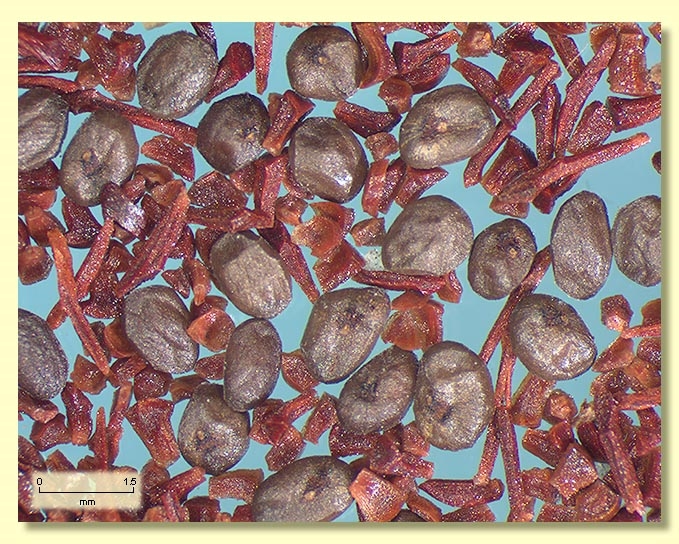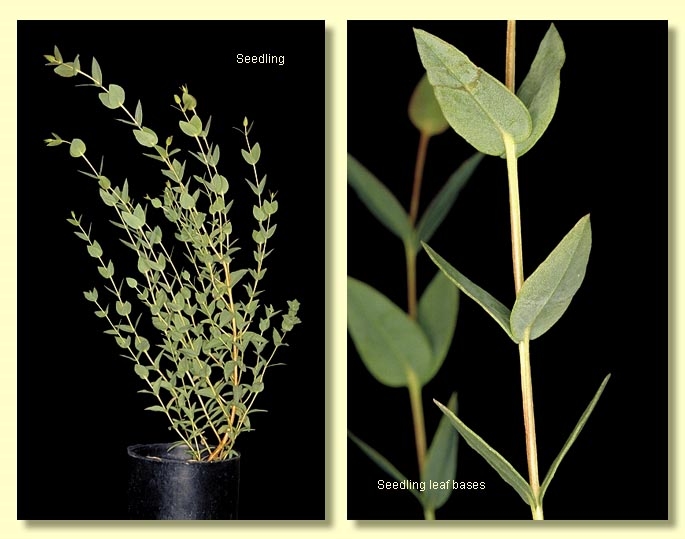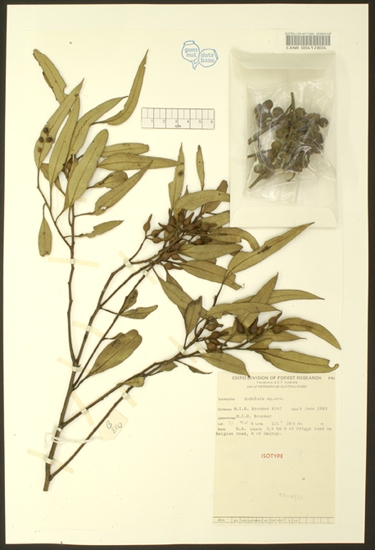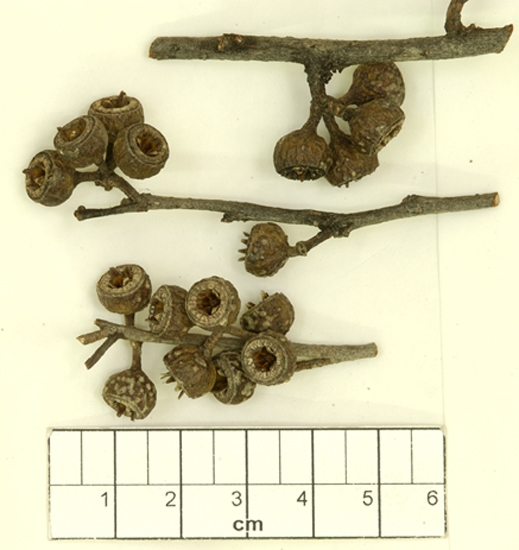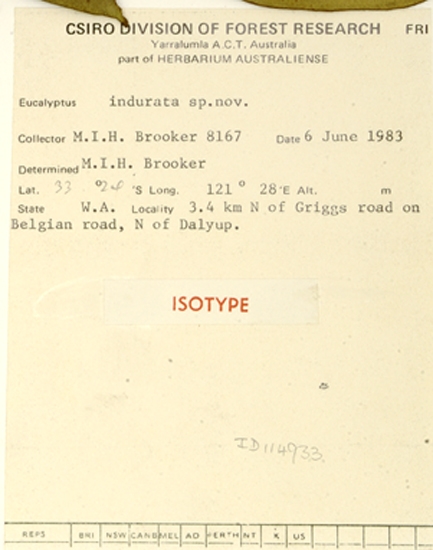Euclid - Online edition
Eucalyptus indurata
Eucalyptus | Symphyomyrtus | Bisectae | Destitutae | Balladonienses
Bark rough on half to all of trunk, hard, compacted, furrowed shallowly (almost like ironbark), or rarely fibrous, blackish-grey to grey, smooth above whitish and grey.
Branchlets lacking oil glands in the pith.
Juvenile growth (coppice or field seedlings to 50 cm): stems rounded in cross-section; juvenile leaves opposite, sessile for ca 8 to 12 nodes then sub-opposite, becoming shortly petiolate at about 0.5–0.8 m tall, cordate to ovate, 3–10 cm long, 1.8–4.5 cm wide, bases slightly decurrent only at lowest nodes but soon amplexicaul then rounded, dull, green to slightly bluish green or scarcely waxy.
Adult leaves alternate, petioles 0.8–2.3 cm long; blade lanceolate, 6.3–10.5 cm long, 1–2.2 cm wide, base tapering to petiole, margin entire, apex acute, dull at first but soon maturing glossy, green, side-veins at an acute or wider angle to midrib, reticulation moderate to dense, rarely obscure, intramarginal vein remote from margin, oil glands island and intersectional.
Inflorescence axillary unbranched, peduncles (0.6)0.8–1.6 cm long, buds 7 per umbel, pedicellate (pedicels 0.2–0.7 cm long). Mature buds more or less ovoid but with prominent beak, 1–1.8 cm long, 0.5–0.7 cm wide, scar present, operculum with robust tapering beak, stamens inflexed, anthers oblong or slightly globoid, versatile, dorsifixed, dehiscing by short lateral slits, style long and straight, stigma blunt, locules (3)4 or 5, the placentae each with 4 vertical rows of ovules. Flowers white to pale yellow.
Fruit pedicellate (pedicels 0.1–0.6 cm long), truncate-globose to almost barrel-shaped, 0.5–1 cm long, 0.8–1.1 cm wide, disc descending obliquely, valves(3)4 or 5, exserted or barely above rim level.
Seeds dark brown to grey-brown, 1.5–3 mm long, flattened-ovoid, dorsal surface smooth, hilum ventral.
Cultivated seedlings (measured at ca node 10): cotyledons Y-shaped (bisected); stems square in cross-section; leaves sessile, opposite for at least 25 nodes, ovate, 1.5–3.5 cm long, 0.8–1.7 cm wide, base slightly decurrent, margin entire, apex pointed, dull, grey-green to green.
Flowering has been recorded in June, July, August and November.
A small tree or rarely a mallee endemic to Western Australia, found south-west of Ravensthorpe north-east to near Balladonia, usually on low sandy rises. The bark on the lower trunk is rough and hard, the leaves glossy green and the flowers pale yellow. The lowest juvenile leaves are slightly decurrent on the stem.
Eucalyptus indurata belongs in Eucalyptus subgenus Symphyomyrtus section Bisectae subsection Destitutae because buds have two opercula, cotyledons are Y-shaped and branchlets lack oil glands in the pith. Within this subsection E. indurata is closely related to only one other species, E. balladoniensis, the two species forming series Balladonienses. E. balladoniensis differs from E. indurata in the consistent mallee habit, loose rough bark, more bluntly and stoutly beaked opercula, and larger buds and fruit. The fruit of E. indurata are similar to those of E. micranthera but that species differs in having completely smooth bark, obtuse non-beaked operculum and a lobed ovary roof. Also with similar fruit are the smooth-barked mallet E. optima and the partly rough-barked lignotuberous tree or mallee E. hypolaena, both desert species with juvenile leaves very strongly decurrent on the stems and buds with finely acute opercula.







